Advanced Techniques - Groovy conditions in a process
In the Processes module, conditions can be formulated in Groovy which can be used to respond to, among others, request values. In the example application, which you can download here and import into your portal with the included process as usual, the release process should be triggered when a button is clicked on. The button saves the current data record at the same time. To only save the current state, the Save button can be used. When the user clicks on the Release button, it also transfers the request parameter rq_customMyParam with the value release.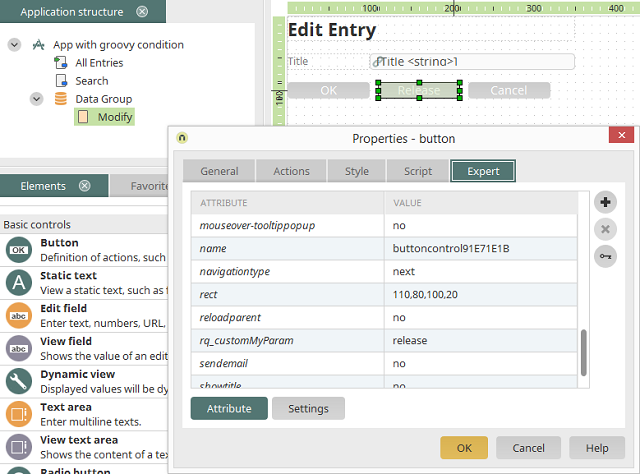
In the process, a Groovy condition should be used to react to this parameter.
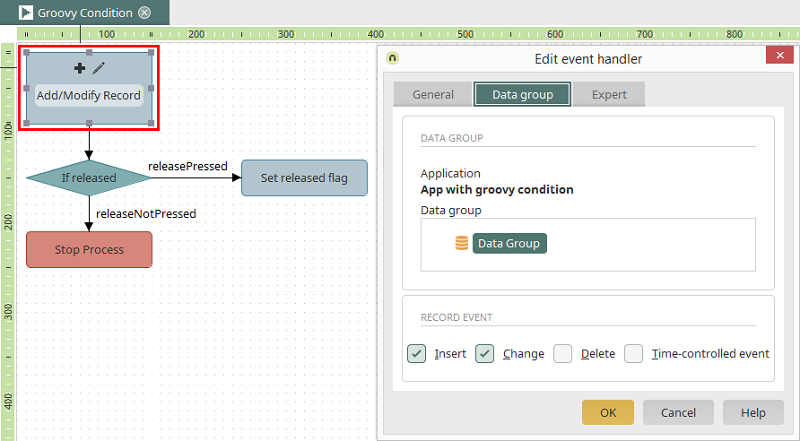
The Data group event handler responds to the adding or modifying (Record events: Insert and Change) of a data record.
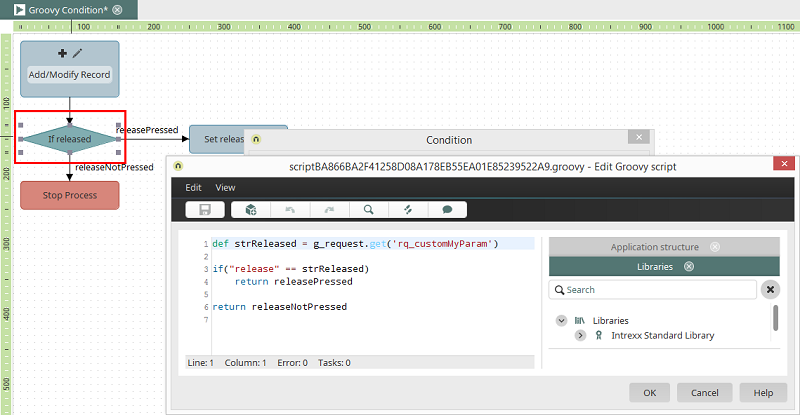
Using Groovy script, the request parameter defined in the Release button is read in the condition. Here is the code example:
def strReleased = g_request.get('rq_customMyParam')
if("release" == strReleased)
return releasePressed
return releaseNotPressed
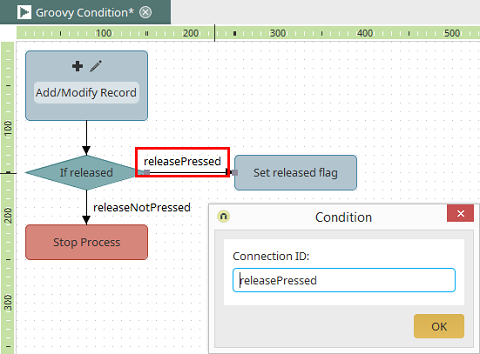
The connection ID is entered in the properties dialog of the respective branch. The branch releasePressed is followed when the release has been given. The branch releaseNotPressed corresponds to the classic ELSE branch and is performed when the Save button is clicked on - a request parameter is not transferred in this case. The label for a connection ID can be chosen freely but has to start with a small letter, as in our label example releasePressed.
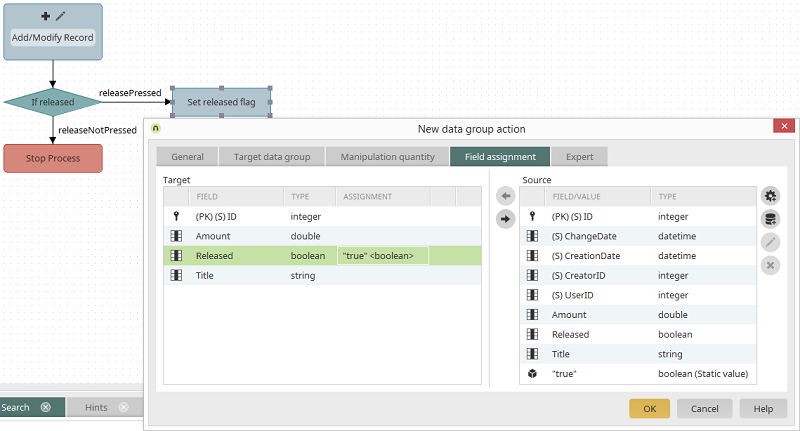
In the subsequent process step, a Data group action is used to set the released status.
| All of the connection IDs defined in the Groovy condition must be included in the process as outcomes of the condition, otherwise this can lead to an error in the process execution. |